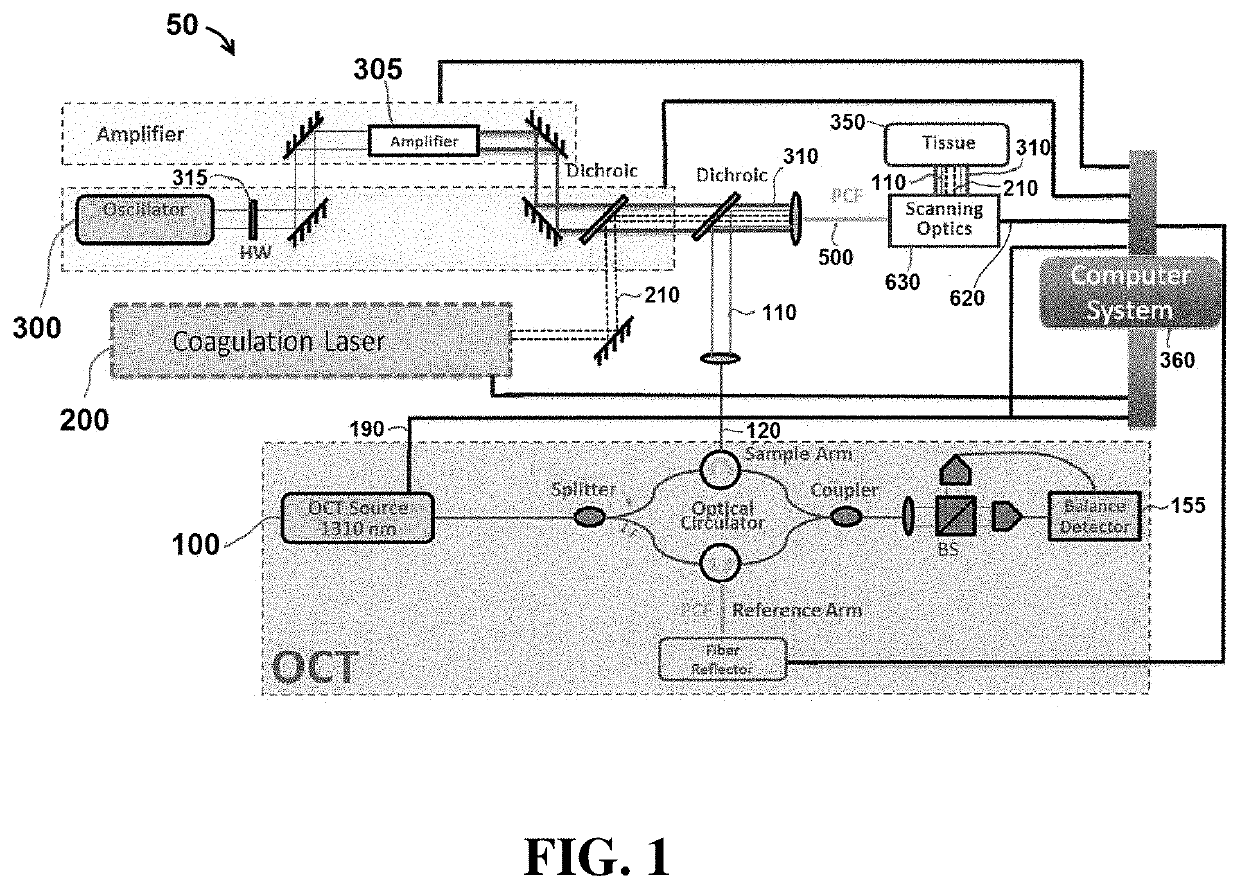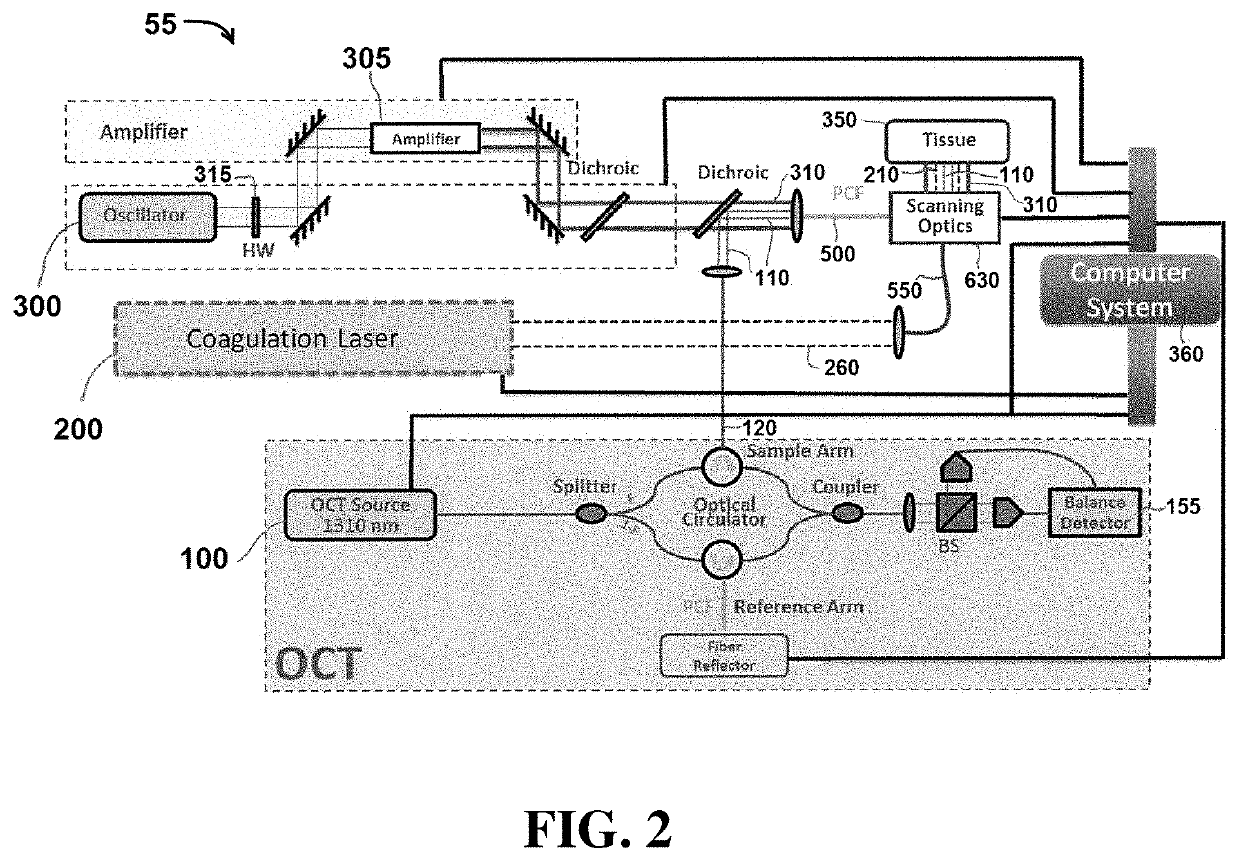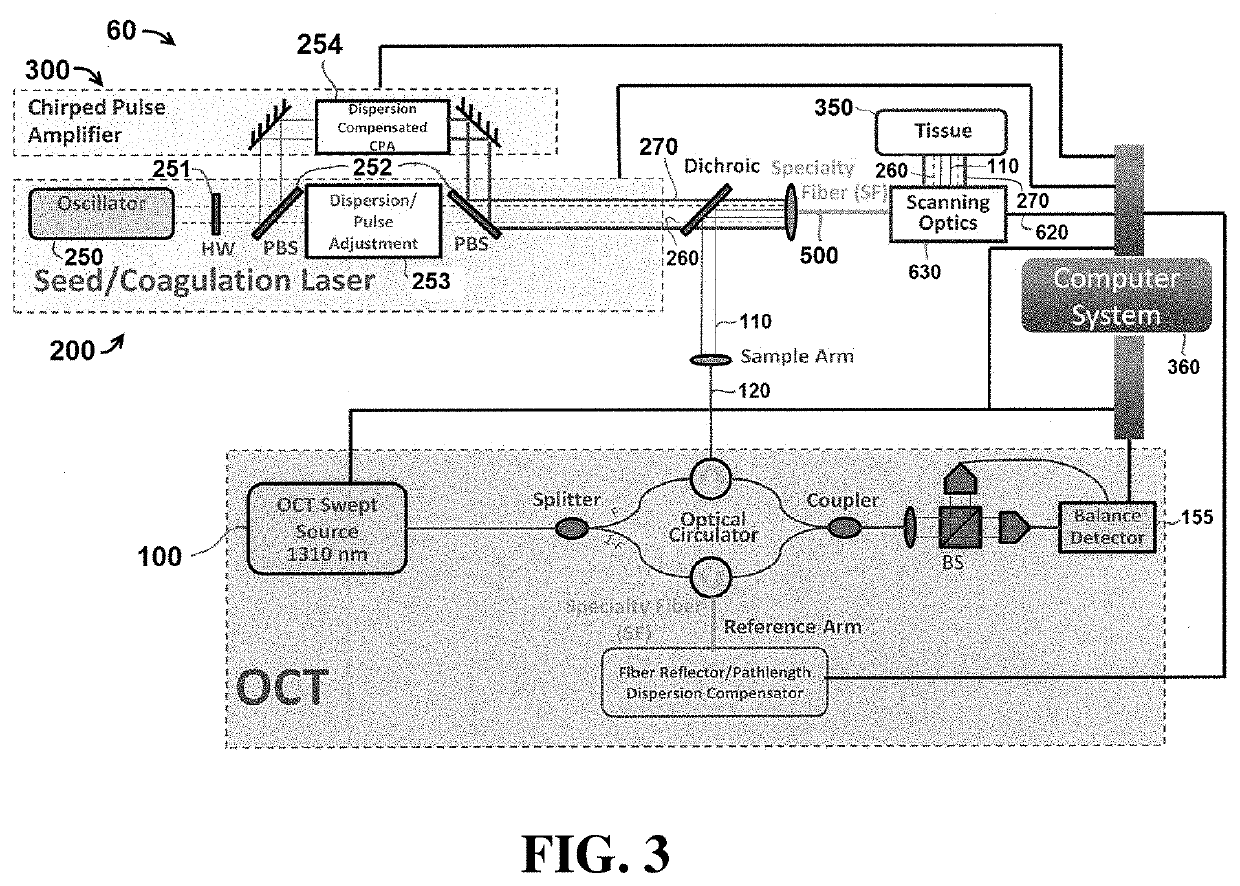Systems and methods for imaging and manipulating tissue
a tissue imaging and tissue technology, applied in the field of systems and methods for imaging and manipulating tissue, can solve the problems of reducing the accuracy of procedures, increasing patient morbidity and mortality, and limited access to surgical sites for multiple systems, so as to reduce the risk of bacterial contamination, improve the prognosis of patients, and reduce the longevity of fertility.
- Summary
- Abstract
- Description
- Claims
- Application Information
AI Technical Summary
Benefits of technology
Problems solved by technology
Method used
Image
Examples
Embodiment Construction
[0055]Exemplary embodiments of the present disclosure include systems and methods that utilize light to image tissue, coagulate tissue (e.g. blood vessels), and break molecular bonds of (e.g. cut) the tissue. In certain embodiments, the light used to perform each of these tasks may be produced by independent and separate components, including for example, lasers. In other embodiments, a single component (e.g. laser) may be configured to produce light energy that is used to perform multiple tasks, including coagulating the tissue and breaking molecular bonds of the tissue. It is understood that the embodiments described herein are merely exemplary, and that other embodiments are included within the scope of the invention.
[0056]As used herein, the term “coagulate” (and related terms, such as “coagulating”, “coagulation”, etc.) is used to refer to a process of interrupting blood flow (e.g. by damaging blood vessels so that when cut, blood does not flow outside the tissue) and rearrangi...
PUM
 Login to View More
Login to View More Abstract
Description
Claims
Application Information
 Login to View More
Login to View More - R&D
- Intellectual Property
- Life Sciences
- Materials
- Tech Scout
- Unparalleled Data Quality
- Higher Quality Content
- 60% Fewer Hallucinations
Browse by: Latest US Patents, China's latest patents, Technical Efficacy Thesaurus, Application Domain, Technology Topic, Popular Technical Reports.
© 2025 PatSnap. All rights reserved.Legal|Privacy policy|Modern Slavery Act Transparency Statement|Sitemap|About US| Contact US: help@patsnap.com



